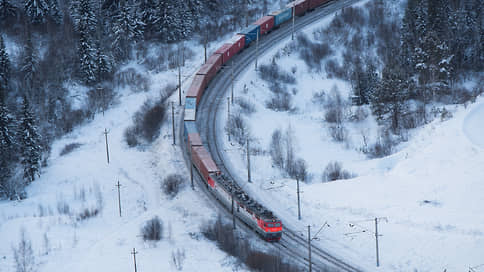Prices for container transportation to the east increased many times in March
[ad_1]

Rates for container transportation from the center of the Russian Federation to Krasnoyarsk and further east increased sharply in March, in some cases by 30 times. Operators explain the situation by a serious reduction in the number of container trains to the east, which created a shortage. The decrease in the availability of container transportation is due to the need to transport export coal. JSC Russian Railways admits that there has been an increase in the supply of cargo that is in the priority rules of higher priority than containers, and coal transportation has been returned to schedule.
The Price Index Center (PIC) of Gazprombank told Kommersant that prices for rail container transportation from Central Russia to the east increased many times in March, in some cases by more than 30 times. Thus, says TsCI analyst Roman Shagalov, the rates for transportation from Moscow to the cities of Eastern Siberia have increased the most. Tariffs for sending cargo to Krasnoyarsk in a 40-foot container owned by an operator have skyrocketed from 5-7 thousand rubles. in February up to 160–180 thousand rubles. in March.
A source among railway operators confirms the “difficult situation” in Krasnoyarsk. According to him, it is now “extremely difficult” to send a container from Krasnoyarsk to the Far East. The cost of transporting a container from Moscow to Irkutsk, Mr. Shagalov clarifies, rose in a month from 25 thousand to 200 thousand rubles. Rates for Vladivostok increased from 100 thousand rubles. at the beginning of the year up to 300 thousand rubles. According to the analyst, operators explain the increase in tariffs by the reduction of Russian Railways in the number of work orders for the formation of container trains from Moscow in the eastern direction, which caused a shortage of seats on them.
Mr. Shagalov adds that the high rate of growth in prices for domestic container transportation is explained, among other things, by the low base effect: previously these directions were unprofitable and were subsidized by operators in order to deliver containers to the east, where they are more in demand. Now such transportation has become profitable.
A Kommersant source says that the reason for stopping the movement of container trains is related to the “excessive shipment of coal in gondola cars and open-top containers” in December-January. In February, he clarified, Russian Railways reduced the previously planned volume of container transportation by at least 10%. Shipments of coal to the east within the framework of instructions from the President of the Russian Federation have higher priority for transportation than containers.
Another Kommersant interlocutor clarifies that the situation became more complicated in the fall, and a sharp deterioration occurred in March, when Russian Railways reduced the dispatch of container trains “almost by half.” A Kommersant source claims that container trains sent in January have still been abandoned.
Another market participant confirms that in March there is indeed a “serious increase in rates” for transportation in the eastern direction. “This happened due to a reduction in the number of work orders to the east this month, which, in turn, is due to the fact that Russian Railways is allowing trains with coal to pass through,” explains Kommersant’s interlocutor. He considers the measure temporary, but emphasizes that “the situation did not have a serious positive impact on the movement of coal”: in both January and February there was a decrease in coal shipments by more than 4% relative to the same months in 2023.
JSC Russian Railways reported to Kommersant that in March, in the eastern direction, “the presentation of cargo increased within the framework of higher queues of the temporary rules for determining the priority of cargo transportation.” We are talking about cargo sent within the framework of individual instructions of the president and government, socially significant cargo, as well as transportation to meet the needs of the regions. For example, loading of petroleum products and coal for domestic consumption increased in March by 1.9% and 0.4%, respectively, in annual terms, according to Russian Railways.
Also, in connection with the implementation of the task of exporting imported goods in containers, “the volume of transportation of freight trains with coal has been restored to the 2022 level.” This, as explained by Russian Railways, “has an impact on the coordination of additional volumes of cargo in the eastern direction.”
[ad_2]
Source link





